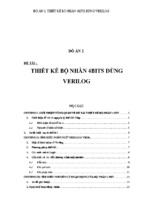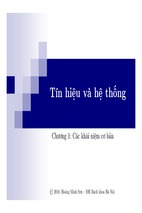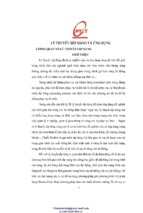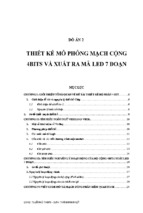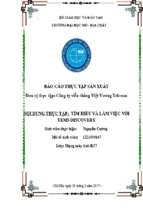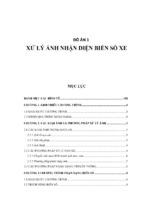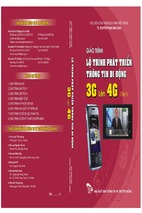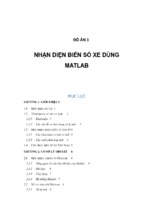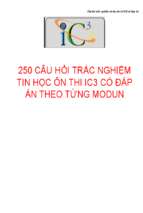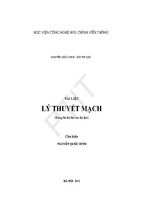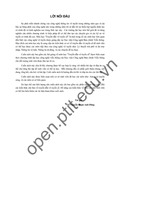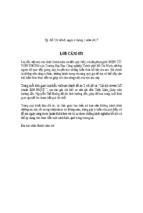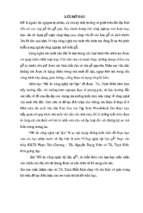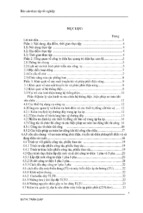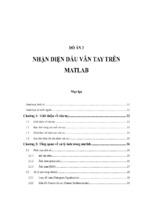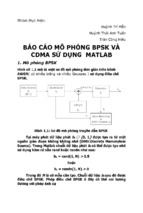Copyright © 2013. Artech House. All rights reserved. May not be reproduced in any form without permission from the publisher, except fair uses permitted under U.S. or
applicable copyright law.
Chapter 1
What Is an SDR?
Modern society as we know it today is becoming increasingly dependent on the reliable
and seamless wireless exchange of information. For instance, a rapidly growing number of individuals are using smartphones in order to access websites, send and receive
emails, view streaming multimedia content, and engage in social networking activities
anywhere on the planet at any time. Furthermore, numerous drivers on the road today
are extensively relying upon global positioning system (GPS) devices and other wireless navigation systems in order to travel in a new neighborhood or city without the
need for a conventional map. Finally, in many hospitals and medical centers across the
nation and around the world, the health of a patient is now being continuously monitored using an array of medical sensors attached to him/her that send vital information
wirelessly to a computer workstation for analysis by a medical expert.
The enabling technology for supporting any form of wireless information exchange is the digital transceiver, which is found in every cell phone, WiFi-enabled
laptop, BlueTooth device, and other wireless appliances designed to transmit and
receive digital data. Digital transceivers are capable of performing a variety of baseband operations, such as modulation, source coding, forward error correction,
and equalization. Although digital transceivers were initially implemented using
integrated circuits and other forms of nonprogrammable electronics, the advent
of programmable baseband functionality for these digital transceivers is the result
of numerous advancements in microprocessor technology over the past several decades. Consequently, there exists a plethora of digital transceiver solutions with a
wide range of capabilities and features. In this chapter, we will provide an introduction to software-defined radio (SDR) hardware platforms and software architectures, as well as study how it has evolved over the past several decades to become a
transformative communications technology.
1.1 HISTORICAL PERSPECTIVE
The term “software-defined radio” was first coined by Joseph Mitola [1], although
SDR technology was available since the 1970s and the first demonstrated SDR proto
type was presented in 1988 [2]. However, the key milestone for the advancement
of SDR technology took place in the early 1990s with the first publicly funded SDR
development initiative called SpeakEasy I/II by the U.S. military [3]. The SpeakEasy
project was a significant leap forward in SDR technology since it used a collection
of programmable microprocessors for implementing more than 10 military communication standards, with transmission carrier frequencies ranging from 2 MHz
to 2 GHz, which at that time was a major advancement in communication systems
engineering. Additionally, the SpeakEasy implementation allowed for software
1
EBSCO Publishing : eBook Collection (EBSCOhost) - printed on 11/7/2016 6:44 AM via LANGSTON UNIV
AN: 753587 ; Pu, Di, Wyglinski, Alexander M..; Digital Communication Systems Engineering with Software-defined
ART_Wyglinski_Ch01.indd
1
Manila Typesetting Company
12/06/2012
Radio
Account: s6746947
1
2
3
4
5
6
7
8
9
10
11
12
13
14
15
16
17
18
19
20
21
22
23
24
25
26
27
28
29
30
31
32
33
34
35
36
37
38
39
40
41
42
43
44
45
46
47
1
2
3
4
5
6
7
8
9
10
11
12
13
14
15
16
17
18
19
20
21
22
23
24
25
26
27
28
29
30
31
32
33
34
35
36
37
38
39
40
41
42
43
44
45
46
47
Copyright © 2013. Artech House. All rights reserved. May not be reproduced in any form without permission from the publisher, except fair uses permitted under U.S. or
applicable copyright law.
2
What Is an SDR?
upgrades of new functional blocks, such as modulation schemes and coding schemes.
The first generation of the SpeakEasy system initially used a Texas Instruments
TMS320C40 processor (40 MHz). However, the SpeakEasy II platform was the first
SDR platform to involve field programmable gate array (FPGA) modules for implementing digital baseband functionality. Note that given the microprocessor technology at the time, the physical size of the SpeakEasy prototypes were large enough to
fit in the back of a truck.
Q
Why were the first SDR platforms physically very large in size?
Following this initial SDR project, research and development activities in this
area continued to advance the current state-of-the-art in SDR technology, with one
of the outcomes being the Joint Tactical Radio System (JTRS), which is a nextgeneration voice-and-data radio used by the U.S. military and employs the software
communications architecture (SCA) [4]. Initially developed to support avionics [5]
and dynamic spectrum access [6] applications, JTRS is scheduled to become the
standard communications platform for the U.S. Army by 2012.
1.2 �MICROELECTRONICS EVOLUTION AND ITS IMPACT ON
COMMUNICATIONS TECHNOLOGY
The microelectronic industry has rapidly evolved over the past six decades, resulting
in numerous advances in microprocessor systems that have enabled many of the applications we take for granted every day. The rate at which this evolution has prog
ressed over time has been characterized by the well-known Moore’s Law, which
defines the long-term trend of the number of transistors that can be accommodated
on an integrated circuit. In particular, Moore’s Law dictates that the number of
transistors per integrated circuit approximately doubles every two years, which
subsequently affects the performance of microprocessor systems such as processing
speed and memory. One area that the microelectronics industry has significantly
influenced over the past half century is the digital communication systems sector,
where microprocessor systems have been increasingly employed in the implementation of digital transceivers, yielding more versatile, powerful, and portable communication system platforms capable of performing a growing number of advance
operations and functions. With the latest advances in microelectronics and microprocessor systems, this has given rise to software-defined radio (SDR) technology,
where baseband radio functionality can be entirely implemented in digital logic and
software, as illustrated in Figure 1.2.
There exists several different types of microprocessor systems for SDR implementations. For instance, one popular choice is the general purpose microprocessor,
which is often used in SDR implementations and prototypes due to its high level of
flexibility with respect to reconfigurability, as well as due to its ease of implementation
regarding new designs. On the other hand, general purpose microprocessors are not
specialized for mathematical computations, and they can be potentially power inef-
EBSCO Publishing : eBook Collection (EBSCOhost) - printed on 11/7/2016 6:44 AM via LANGSTON UNIV
AN: 753587 ; Pu, Di, Wyglinski, Alexander M..; Digital Communication Systems Engineering with Software-defined
ART_Wyglinski_Ch01.indd
2
Manila Typesetting Company
12/06/2012
Radio
Account: s6746947
Copyright © 2013. Artech House. All rights reserved. May not be reproduced in any form without permission from the publisher, except fair uses permitted under U.S. or
applicable copyright law.
1.2 Microelectronics Evolution and its Impact on Communications Technology
3
ficient. Another type of microprocessor system, called a digital signal processor (DSP),
is specialized for performing mathematical computations, implementation of new digital communication modules can be performed with relative ease, and the processor |
is relatively power efficient (e.g., DSPs are used in cellular telephones). On the other
hand, DSPs are not well suited for computationally intensive processes and can be
rather slow. Alternatively, field programmable gate arrays (FPGAs) are computationally powerful, but power inefficient, and it is neither flexible nor easy to implement
new modules. Similarly, graphics processing units (GPUs) are extremely powerful
computationally but difficult to use and it is implement new modules as well.
1.2.1 SDR Definition
Given these microprocessor hardware options, let us now proceed with formulating a definition for an SDR platform. An SDR is a class of reconfigurable/
reprogrammable radios whose physical layer characteristics can be significantly modified via software changes. It is capable of implementing different functions at different
times on the same platform, it defines in software various baseband radio features,
(e.g., modulation, error correction coding), and it possesses some level of software
control over RF front-end operations, (e.g., transmission carrier frequency). Since all
of the baseband radio functionality is implemented using software, this implies that
potential design options and radio modules available to the SDR platform can be
readily stored in memory and called upon when needed for a specific application, such
as a specific modulation, error correction coding, or other functional block needed
to ensure reliable communications. Note that due to the programmable nature of the
SDR platform and its associated baseband radio modules, these functional blocks can
potentially be changed in real-time and the operating parameters of functional blocks
can be adjusted either by a human operator or an automated process.
Although definitions may vary to a certain degree regarding what constitutes
an SDR platform, several key characteristics that generally define an SDR can be
summarized by the following list [7]:
• Multifunctionality: Possessing the ability to support multiple types of radio
functions using the same digital communication system platform.
• Global mobility: Transparent operation with different communication networks located in different parts of the world (i.e., not confined to just one
standard).
• Compactness and power efficiency: Many communication standards can be
supported with just one SDR platform.
• Ease of manufacturing: Baseband functions are a software problem, not a
hardware problem.
• Ease of upgrading: Firmware updates can be performed on the SDR platform
to enable functionality with the latest communication standards.
One of the most commonly leveraged SDR characteristic is that of multifunctionality,
where the SDR platform employs a particular set of baseband radio modules based on
how well the communication system will perform as a result of that configuration. To
illustrate how multifunctionality might work on an SDR platform, suppose we employ
EBSCO Publishing : eBook Collection (EBSCOhost) - printed on 11/7/2016 6:44 AM via LANGSTON UNIV
AN: 753587 ; Pu, Di, Wyglinski, Alexander M..; Digital Communication Systems Engineering with Software-defined
ART_Wyglinski_Ch01.indd
3
Manila Typesetting Company
12/06/2012
Radio
Account: s6746947
1
2
3
4
5
6
7
8
9
10
11
12
13
14
15
16
17
18
19
20
21
22
23
24
25
26
27
28
29
30
31
32
33
34
35
36
37
38
39
40
41
42
43
44
45
46
47
1
2
3
4
5
6
7
8
9
10
11
12
13
14
15
16
17
18
19
20
21
22
23
24
25
26
27
28
29
30
31
32
33
34
35
36
37
38
39
40
41
42
43
44
45
46
47
Copyright © 2013. Artech House. All rights reserved. May not be reproduced in any form without permission from the publisher, except fair uses permitted under U.S. or
applicable copyright law.
4
What Is an SDR?
(a)
(b)
Figure 1.1 An illustration of multifunctionality in an FPGA-based SDR platform. (a) Swapping dif
ferent modulation schemes on the same FPGA. (b) Digital communication transmitter chain on an
FPGA using the multiprocessor system-on-chip (MPSoC) concept.
an FPGA-based implementation consisting of a baseband radio architecture shown in
Figure 1.1(a). Now, let us assume that the transmission environment has changed and
the SDR platform has determined that a change in the modulation scheme is needed
to continue guaranteeing sufficient transmission performance. Consequently, using the
multiprocessor system-on-chip (MPSoC) concept, the SDR platform quickly swaps out
the BPSK modulation software module and replaces it with a QPSK modulation software module, allowing for the continued operation of the SDR platform with minimal
interruption. The way that the MPSoC concept works is shown in Figure 1.1(b), where
EBSCO Publishing : eBook Collection (EBSCOhost) - printed on 11/7/2016 6:44 AM via LANGSTON UNIV
AN: 753587 ; Pu, Di, Wyglinski, Alexander M..; Digital Communication Systems Engineering with Software-defined
ART_Wyglinski_Ch01.indd
4
Manila Typesetting Company
12/06/2012
Radio
Account: s6746947
1.3 Anatomy of an SDR
5
Copyright © 2013. Artech House. All rights reserved. May not be reproduced in any form without permission from the publisher, except fair uses permitted under U.S. or
applicable copyright law.
a microblaze on the FPGA acts as a mini-microprocessor that makes decisions on what
parts of the FPGA to activate, thus enabling these specific baseband radio modules.
1.3 ANATOMY OF AN SDR
An SDR system is a complex device that performs several complicated tasks simultaneously in order to enable the seamless transmission and reception of data. In
general, digital communications systems consists of an interdependent sequence of
operations responsible for taking some type of information, whether it is human
speech, music, or video images, and transmit it over the air to an awaiting receiver
for processing and decoding into a reconstructed version of the original information signal. If the original information is analog, it must first be digitized using
techniques such as quantization in order for us to obtain a binary representation of
this information. Once in a binary format, the transmitter digitally processes this
information and converts it into an electromagnetic sinusoidal waveform that is
uniquely defined by its physical characteristics, such as its signal amplitude, carrier
frequency, and phase. At the other end of the communications link, the receiver
is tasked with correctly identifying the physical characteristics of the intercepted
electromagnetic waveform transmitted across a potentially noisy and distortionfilled channel, and ultimately returning the intercepted signal back into the correct
binary representation. The basic building block of a digital communication system
is shown in Figure 1.2.
We see in Figure 1.2 that the input to the transmitter and output of the receiver
originate from or are fed into a digital source and digital sink, respectively. These
two blocks represent the source and destination of the digital information to be
communicated between the transmitter and receiver. Once the binary information
Figure 1.2 An illustration describing some of the important components that constitute a modern
digital communications system. Note that for a SDR-based implementation, those components indicated as “programmable” can be realized in either programmable logic or software.
EBSCO Publishing : eBook Collection (EBSCOhost) - printed on 11/7/2016 6:44 AM via LANGSTON UNIV
AN: 753587 ; Pu, Di, Wyglinski, Alexander M..; Digital Communication Systems Engineering with Software-defined
ART_Wyglinski_Ch01.indd
5
Manila Typesetting Company
12/06/2012
Radio
Account: s6746947
1
2
3
4
5
6
7
8
9
10
11
12
13
14
15
16
17
18
19
20
21
22
23
24
25
26
27
28
29
30
31
32
33
34
35
36
37
38
39
40
41
42
43
44
45
46
47
1
2
3
4
5
6
7
8
9
10
11
12
13
14
15
16
17
18
19
20
21
22
23
24
25
26
27
28
29
30
31
32
33
34
35
36
37
38
39
40
41
42
43
44
45
46
47
Copyright © 2013. Artech House. All rights reserved. May not be reproduced in any form without permission from the publisher, except fair uses permitted under U.S. or
applicable copyright law.
6
What Is an SDR?
is introduced to the transmitter, the first task performed is to remove all redundant/
repeating binary patterns from the information in order to increase the efficiency
of the transmission. This is accomplished using the source encoder block, which is
designed to strip out all redundancy from the information. Note that at the receiver,
the source decoder reintroduces the redundancy in order to return the binary information back to its original form. Once the redundancy has been removed from the
binary information at the transmitter, a channel encoder is employed to introduce
a controlled amount of redundancy to the information stream in order to protect
it from potential errors introduced during the transmission process across a noisy
channel. A channel decoder is used to remove this controlled redundancy and return the binary information back to its original form. The next step at the transmitter is to convert the binary information into unique electromagnetic waveform
properties such as amplitude, carrier frequency, and phase. This is accomplished
using a mapping process called modulation. Similarly, at the receiver the demodulation process converts the electromagnetic waveform back into its respective binary
representation. Finally, the discrete samples outputted by the modulation block
are resampled and converted into a baseband analog waveform using a digital-toanalog (D/A) converter before being processed by the radio frequency (RF) frontend of the communication system and upconverted to an RF carrier frequency.
At the receiver, the reverse operation is performed, where the intercepted analog
signal is downconverted by the RF front-end to a baseband frequency before being
sampled and processed by an analog-to-digital (A/D) converter.
1.3.1 Design Considerations
Given the complexity of an SDR platform and its respective components, as described in the previous section as well as in Figure 1.2, it is important to understand
the limitations of a specific SDR platform and how various design decisions may
impact the performance of the resulting prototype. For instance, it is very desirable
to have real-time baseband processing for spectrum sensing and agile transmission
operations with high computational throughput and low latency. However, if the
microprocessor being employed by the SDR platform is not sufficiently powerful
enough in order to support the computational operations of the digital communication system, one needs to reconsider either the overall transceiver design or the
requirements for low latency and high throughput. Otherwise, the SDR implementation will fail to operate properly, yielding transmission errors and poor communication performance. An example of when the microprocessor is not capable
of handling the computational needs of the SDR platform is shown in Figure 1.3,
where the transmission being produced by the SDR platform is occurring in bursts,
yielding several periods of transmitted signal interspersed with periods of no transmissions. Note that such a bursty transmission would be extremely difficult to handle at the receiver due to the intermittent nature of the signal being intercepted.
Other design considerations to think about when devising digital communication systems based on an SDR platform include the following:
• The integration of the physical and network layers via a real-time protocol
implementation on an embedded processor. Note that most communication
EBSCO Publishing : eBook Collection (EBSCOhost) - printed on 11/7/2016 6:44 AM via LANGSTON UNIV
AN: 753587 ; Pu, Di, Wyglinski, Alexander M..; Digital Communication Systems Engineering with Software-defined
ART_Wyglinski_Ch01.indd
6
Manila Typesetting Company
12/06/2012
Radio
Account: s6746947
Copyright © 2013. Artech House. All rights reserved. May not be reproduced in any form without permission from the publisher, except fair uses permitted under U.S. or
applicable copyright law.
1.4 Build it and they will Come
7
Figure 1.3 An example of sampling rate errors when the SDR platform is unable to keep up with
the transmission of the data. Note that the bursts can result in significant difficulty at the receiver
with respect to the interception and decoding of the received signal.
systems are divided into logically separated layers in order to more readily
facilitate the design of the communication system. However, it is imperative
that each layer is properly designed due to the strong interdependence between all the layers.
• Ensuring that a sufficiently wide bandwidth radio front-end exists with agility over multiple subchannels and scalable number of antennas for spatial
processing. Given how many of the advanced communication system designs
involve the use of multiple antennas and wideband transmissions, it is important to know what the SDR hardware is capable of doing with respect to
these physical attributes.
• Many networks employing digital communication systems possess a centralize architecture for controlling the operations of the overall network (e.g.,
control channel implementation). Knowing your radio network architecture
is important since it will dictate what sort of operations are essential for one
digital transceiver to communicate with another.
• The ability to perform controlled experiments in different environments (e.g.,
shadowing and multipath, indoor and outdoor environments) is important
for the sake of demonstrating the reliability of a particular SDR implementation. In other words, if an experiment involving an SDR prototype system is
conducted twice in a row in the exact same environment and using the exact
same operating parameters, it is expected that the resulting output and performance should be the same. Consequently, being able to perform controlled
experiments provides the SDR designer with a “sanity check” capability.
• Reconfigurability and fast prototyping through a software design flow for
algorithm and protocol description.
1.4 BUILD IT AND THEY WILL COME
Given our brief overview of SDR technology and its definition, as well as a survey
of various microprocessor design options and constraints available when implementing an SDR platform, we will now focus our attention on several well-known
EBSCO Publishing : eBook Collection (EBSCOhost) - printed on 11/7/2016 6:44 AM via LANGSTON UNIV
AN: 753587 ; Pu, Di, Wyglinski, Alexander M..; Digital Communication Systems Engineering with Software-defined
ART_Wyglinski_Ch01.indd
7
Manila Typesetting Company
12/06/2012
Radio
Account: s6746947
1
2
3
4
5
6
7
8
9
10
11
12
13
14
15
16
17
18
19
20
21
22
23
24
25
26
27
28
29
30
31
32
33
34
35
36
37
38
39
40
41
42
43
44
45
46
47
1
2
3
4
5
6
7
8
9
10
11
12
13
14
15
16
17
18
19
20
21
22
23
24
25
26
27
28
29
30
31
32
33
34
35
36
37
38
39
40
41
42
43
44
45
46
47
Copyright © 2013. Artech House. All rights reserved. May not be reproduced in any form without permission from the publisher, except fair uses permitted under U.S. or
applicable copyright law.
8
What Is an SDR?
SDR hardware implementations published in the open literature. Note that when
designing a complete SDR system from scratch, it is very important to have both
a hardware platform that is both sufficiently programmable and computationally
powerful, as well as a software architecture that can allow a communication system
designer to implement a wide range of different transceiver realizations. In this section, we will first study some of the well-known SDR hardware platforms before
talking about some of the available SDR software architectures.
1.4.1 Hardware Platforms
Exploration into advanced wireless communication and networking techniques require highly flexible hardware platforms. As a result, SDR is very well suited due
to its rapidly reconfigurable attributes, which allows for controlled yet realistic
experimentation. Thus, the use of real-time test bed operations enables a large set
of experiments for various receiver settings, transmission scenarios, and network
configurations. Furthermore, SDR hardware provides an excellent alternative for
comprehensive evaluation of communication systems operating within a networked
environment, whereas Monte Carlo simulations can be computationally exhaustive
and are only as accurate as the devised computer model. In this section, we will
study several well-known SDR hardware platforms used by the wireless community
for research and experimentation.
One of the most well-known of all SDR hardware platforms is the Universal
Software Radio Peripheral (USRP) concept that was introduced by Matt Ettus,
founder and president of Ettus Research LLC, which is considered to be a relatively
inexpensive hardware for enabling SDR design and development [8]. All the baseband digital communication algorithms and digital signal processing are conducted
on a computer workstation “host,” where the USRP platform acts as a radio peripheral allowing for over-the-air transmissions and the libusrp library file defines the interface between the USRP platform and the host computer workstation.
Note that the USRP design is open source, which allows for user customization and
fabrication. Furthermore, USRP platform design is modular in terms of the supported RF front-ends, referred to as daughtercards. We will now talk about two
types of USRP platforms: the USRP1 and USRP2.
The Universal Software Radio Peripheral-Version 1 (USRP1) was designed and
manufactured by Ettus Research LLC for a variety of different communities interested
in an inexpensive SDR platform. The USRP1 consists of a USB interface between host
computer workstation and USRP1 platform, which resulted in a data bottleneck due
to the low data rates supported by the USB connection. The USRP1 supports up
to two RF transceiver daughtercards, possesses an Altera Cyclone EP1C12Q240C8
FPGA for performing sampling and filtering, contains four high-speed analog-todigital converters, each capable of 64 MS/s at a resolution of 12 bits, with an 85 dB
SFDR (AD9862), and contains four high-speed digital-to-analog converters, each capable of 128 MS/s at a resolution of 14 bits, with 83 dB SFDR (AD9862).
Following the success of the USRP1, Ettus Research LLC officially released the
Universal Software Radio Peripheral-Version 2 (USRP2) platform in September
2008, as shown in Figure 1.4(a). The USRP2 platform provides a more capable
EBSCO Publishing : eBook Collection (EBSCOhost) - printed on 11/7/2016 6:44 AM via LANGSTON UNIV
AN: 753587 ; Pu, Di, Wyglinski, Alexander M..; Digital Communication Systems Engineering with Software-defined
ART_Wyglinski_Ch01.indd
8
Manila Typesetting Company
12/06/2012
Radio
Account: s6746947
Copyright © 2013. Artech House. All rights reserved. May not be reproduced in any form without permission from the publisher, except fair uses permitted under U.S. or
applicable copyright law.
1.4 Build it and they will Come
9
(a)
(b)
Figure 1.4 Examples of software-defined radio platforms. (a) Front view of a Universal Software
Radio Peripheral–Version 2 (USRP2) software-defined radio platform by Ettus Research LLC. (b) Front
view of a Kansas University Agile Radio (KUAR) software-defined radio platform.
SDR device for enabling digital communication system design and implementation.
The USRP2 features include a gigabit Ethernet interface between host computer
workstation and USRP2 platform, supports only one RF transceiver daughtercard,
possesses a Xilinx Spartan 3-2000 FPGA for performing sampling and filtering,
contains two 100 MS/s, 14 bits, analog-to-digital converters (LTC2284), with a
72.4 dB SNR and 85 dB SFDR for signals at the Nyquist frequency, contains two
400 MS/s, 16 bits, digital-to-analog converters (AD9777), with a 160 MS/s without
interpolation, and up to 400 MS/s with 8x interpolation, and is MIMO-capable
for supporting the processing of digital communication system designs employing
multiple antennas.
The radio frequency (RF) front-ends are usually very difficult to design and
are often limited to a narrow range of transmission carrier frequencies. This is due
to the fact that the properties of the RF circuit and its components change across
different frequencies and that the RF filters are constrained in the sweep frequency
range. Consequently, in order to support a wide range of transmission carrier frequencies, both the USRP1 and USRP2 platforms can use an assortment of modular
RF daughtercards, such as the following:
• BasicTX: A transmitter that supports carrier frequencies within 1–250 MHz;
• BasicRX: A receiver that supports carrier frequencies within 1–250 MHz;
• RFX900: A transceiver that supports carrier frequencies within 800–1000
MHz with a 200+mW output;
• RFX2400: A transceiver that supports carrier frequencies within 2.3–2.9 GHz
with a 20+mW output;
• XCVR2450: A transceiver that supports carrier frequencies within two
bands, namely, 2.4–2.5 GHz with an output of 100+mW and 4.9–5.85 GHz
with an output of 50+mW.
EBSCO Publishing : eBook Collection (EBSCOhost) - printed on 11/7/2016 6:44 AM via LANGSTON UNIV
AN: 753587 ; Pu, Di, Wyglinski, Alexander M..; Digital Communication Systems Engineering with Software-defined
ART_Wyglinski_Ch01.indd
9
Manila Typesetting Company
12/06/2012
Radio
Account: s6746947
1
2
3
4
5
6
7
8
9
10
11
12
13
14
15
16
17
18
19
20
21
22
23
24
25
26
27
28
29
30
31
32
33
34
35
36
37
38
39
40
41
42
43
44
45
46
47
1
2
3
4
5
6
7
8
9
10
11
12
13
14
15
16
17
18
19
20
21
22
23
24
25
26
27
28
29
30
31
32
33
34
35
36
37
38
39
40
41
42
43
44
45
46
47
Copyright © 2013. Artech House. All rights reserved. May not be reproduced in any form without permission from the publisher, except fair uses permitted under U.S. or
applicable copyright law.
10
What Is an SDR?
Another well-known SDR hardware platform was the Kansas University Agile
Radio (KUAR), which is a small form factor SDR platform containing a Xilinx
Virtex-II Pro FPGA board and a PCI Express 1.4 GHz Pentium-M microprocessor,
as shown in Figure 1.4(b) [9, 10]. For its size and capability, the KUAR was one
of the leading SDR implementations in its day, incorporating substantial computational resources as well as wideband frequency operations. Around the same time
period, the Berkeley BEE2 was designed as a powerful reconfigurable computing engine with five Xilinx Virtex-II Pro FPGAs on a custom-built emulation board [11].
The Berkeley Wireless Research Center (BWRC) cognitive radio test-bed hardware
architecture consists of the BEE2, several reconfigurable 2.4-GHz radio modems,
and fiber link interfaces for connections between the BEE2 and the radios modems.
The software architecture consists of Simulink-based design flow and BEE2 specific
operating system, which provides an integrated environment for implementation
and simple data acquisition during experiments.
With respect to compact SDR platforms, Motorola developed and built a 10-MHz,
4-GHz CMOS-based small form factor cognitive radio platform prototype [12].
Fundamentally flexible, with a low-power transceiver radio frequency integrated circuit (RFIC) at the core of this experimental platform, this prototype can receive and
transmit signals of many wireless protocols, both standard and experimental. Carrier frequencies from 10 MHz to 4 GHz with channel bandwidths from 8 kHz to
20 MHz were supported. Similarly, the Maynooth Adaptable Radio System (MARS) is
a custom-built small form factor SDR platform [13]. The MARS platform had the
original objectives of being a personal computer connected radio front-end where all
the signal processing is implemented on the computer’s general-purpose processor.
The MARS platform was designed to deliver performance equivalent to that of a
future base station and the wireless communication standards in the 1700-MHz to
2450-MHz frequency range. Furthermore, the communication standards GSM1800,
PCS1900, IEEE 802.11b/g, and UMTS (TDD and FDD) are also supported.
Rice University Wireless Open Access Research Platform (WARP) radios include a Xilinx Virtex-II Pro FPGA board as well as a MAX2829 transceiver [14],
while the Lyrtech Small Form Factor SDR is developed by a company from the Canadian Province of Québec that leverages industrial collaborations between Texas
Instruments and Xilinx in order to produce these high-performance SDR platforms
that consist of an array of different microprocessor technology [15]. Finally, Epiq
Solutions recently released the MatchStiq SDR platform, which is a powerful yet
very compact form factor SDR platform capable of being deployed in the field to
perform a variety of wireless experiments, including their inclusion onboard vehicles such as automobiles and unmanned aerial vehicles [16].
1.4.2 SDR Software Architecture
Given the programmable attributes of an SDR platform, it is vitally important to
also develop an efficient and reliable software architecture that would operate on
these platforms in order to perform the various data transmission functions we
expect from a wireless communications system. In this section, we will review some
of the SDR software architectures currently available for use with a wide variety of
SDR hardware platforms.
EBSCO Publishing : eBook Collection (EBSCOhost) - printed on 11/7/2016 6:44 AM via LANGSTON UNIV
AN: 753587 ; Pu, Di, Wyglinski, Alexander M..; Digital Communication Systems Engineering with Software-defined
ART_Wyglinski_Ch01.indd
10
Manila Typesetting Company
12/06/2012
Radio
Account: s6746947
Copyright © 2013. Artech House. All rights reserved. May not be reproduced in any form without permission from the publisher, except fair uses permitted under U.S. or
applicable copyright law.
1.4 Build it and they will Come
11
One of the first Simulink interfaces to the USRP2 platform was implemented as
part of an MS thesis at WPI and generously sponsored by the MathWorks [17]. In
this research project, the focus was on creating a Simulink blockset capable of communicating with the USRP2 libraries, which can then allow for communications with
the USRP2 platform itself. The resulting blocksets from this thesis research are shown
in Figure 1.5. By creating a Simulink interface to this SDR hardware, it is expected
that the existing signal processing libraries provided by the MathWorks can be extensively leveraged in order to create actual digital communications systems capable of
performing over-the-air data transmission with other USRP2 platforms.
The architecture of the Simulink transmit and receiver blocks are shown in
Figure 1.6. In Figure 1.6(b), we observe how the Simulink transmitter block calls
the functions implemented by the S-function at different parts of the simulation.
While the simulation is initializing, it calls on mdlStart such that a data handler
object and first-in first-out (FIFO) register are created and a USRP2 object is instantiated. Once the USRP2 object has been created, the operating parameters set in the
mask are passed down to the USRP2 hardware while the model is in the process
of initializing. Furthermore, the data handler object loads data into the FIFO and,
while the simulation is running, Simulink is repeatedly calling mdlOutputs such
that a frame of data is read from the FIFO, converted to a Simulink data type, and
sent to the output port to be received in the simulation. Note that when the simulation has finished, the FIFO and data handler are deallocated. The transmitter shown
in Figure 1.6(a) possesses a similar mode of operation.
From the MS thesis and the development of the first Simulink prototype blockset interface with the USRP2 SDR platform, the MathWorks built upon the lessons
learned from this experience and ultimately created the SDRu blockset, which can
be downloaded from the MathWorks website and installed with MATLAB R2011a
or later along with the Communications Toolbox [18]. After several years of development, the SDRu blocks are at the core of numerous SDR implementations
using Simulink and the USRP2, as well as educational activities such as those to be
discussed later in this book.
Figure 1.5 The initial prototype Simulink transmitter and receiver interfaces for the USRP2 platform [17].
EBSCO Publishing : eBook Collection (EBSCOhost) - printed on 11/7/2016 6:44 AM via LANGSTON UNIV
AN: 753587 ; Pu, Di, Wyglinski, Alexander M..; Digital Communication Systems Engineering with Software-defined
ART_Wyglinski_Ch01.indd
11
Manila Typesetting Company
12/06/2012
Radio
Account: s6746947
1
2
3
4
5
6
7
8
9
10
11
12
13
14
15
16
17
18
19
20
21
22
23
24
25
26
27
28
29
30
31
32
33
34
35
36
37
38
39
40
41
42
43
44
45
46
47
1
2
3
4
5
6
7
8
9
10
11
12
13
14
15
16
17
18
19
20
21
22
23
24
25
26
27
28
29
30
31
32
33
34
35
36
37
38
39
40
41
42
43
44
45
46
47
Copyright © 2013. Artech House. All rights reserved. May not be reproduced in any form without permission from the publisher, except fair uses permitted under U.S. or
applicable copyright law.
12
What Is an SDR?
(a)
(b)
Figure 1.6 Architecture of the initial prototype interfaces to the USRP2 platform [17]. (a) Initial
prototype Simulink transmitter interface. (b) Initial prototype Simulink receiver interface.
Other SDR software architectures include the popular open-source GNU Radio
software [19], which is a community based effort for devising an SDR software
architecture capable of interfacing with any SDR hardware platform, especially the
USRP family of products, and enabling them to reliably and seamlessly communicate
with other SDR platforms as well as conventional wireless systems. Given the large
EBSCO Publishing : eBook Collection (EBSCOhost) - printed on 11/7/2016 6:44 AM via LANGSTON UNIV
AN: 753587 ; Pu, Di, Wyglinski, Alexander M..; Digital Communication Systems Engineering with Software-defined
ART_Wyglinski_Ch01.indd
12
Manila Typesetting Company
12/06/2012
Radio
Account: s6746947
Copyright © 2013. Artech House. All rights reserved. May not be reproduced in any form without permission from the publisher, except fair uses permitted under U.S. or
applicable copyright law.
1.6 Additonal Readings
13
open-source community supporting the GNU Radio software architecture, several
community members have posted their customized solutions that were not incorporated into GNU Radio directly on the Comprehensive GNU Radio Archive Network
(CGRAN) website for download by the rest of the community [20]. Finally, another
SDR software interface is the Implementing Radio in Software (IRIS) project [21],
which is led by the researchers at the Centre for Telecommunications Value-Chain
Research (CTVR) at Trinity College Dublin and used by many researchers across
Europe and around the world.
1.5 CHAPTER SUMMARY
In this chapter, we studied how the development of digital communication systems
and SDR technology is closely linked to the evolution of microprocessor technology.
Furthermore, we obtained some insight on the various microprocessor technologies
that are currently available to be implemented as part of an SDR hardware proto
type. Finally, we concluded this chapter with a literature survey of several SDR
hardware platforms and software architectures, and getting a better understanding
of the design decisions involved in implementing this systems. By providing some
insights on how this technology functions, it is expected that when we eventually
begin implementing SDR prototype systems we will know the limitations and capabilities of our SDR platform.
1.6 ADDITIONAL READINGS
Although this chapter gave a brief introduction to the expanding area of SDR technology, several books available in the open literature can provide a more detailed
viewpoint of this topic. For instance, the book by Reed extensively covers many of
the issues associated with the software architecture of an SDR platform [7], while
many of the design considerations and approaches used to construct SDR hardware
prototype and their RF front-ends are covered in the book by Kensington [22]. For
a decent overview of some of the SDR prototype platforms covered in this chapter,
namely, the BEE2, the MARS project, and the Motorola SDR platform, check out
Chapter 19 in [23]. Finally, for a clean-slate viewpoint about SDR technology and
wireless systems in general, the interested reader is encourage to check out the conference publication by Farrell et al. [24].
References
[1]
[2]
[3]
Mitola III, J. “Software Radios: Survey, Critical Evaluation and Future Directions,” IEEE
Aerospace and Electronic Systems Magazine, April 1993.
Hoeher, P. and H. Lang, “Coded-8PSK Modem for Fixed and Mobile Satellite Services
based on DSP,” Proceedings of the First International Workshop on Digital Signal Processing Techniques Applied to Space Communications, Noordwijk, The Netherlands, 1988.
Lackey, R. J., and D. W. Upmal, “Speakeasy: The Military Software Radio,” IEEE Communications Magazine, May 1995.
EBSCO Publishing : eBook Collection (EBSCOhost) - printed on 11/7/2016 6:44 AM via LANGSTON UNIV
AN: 753587 ; Pu, Di, Wyglinski, Alexander M..; Digital Communication Systems Engineering with Software-defined
ART_Wyglinski_Ch01.indd
13
Manila Typesetting Company
12/06/2012
Radio
Account: s6746947
1
2
3
4
5
6
7
8
9
10
11
12
13
14
15
16
17
18
19
20
21
22
23
24
25
26
27
28
29
30
31
32
33
34
35
36
37
38
39
40
41
42
43
44
45
46
47
14
[4]
Copyright © 2013. Artech House. All rights reserved. May not be reproduced in any form without permission from the publisher, except fair uses permitted under U.S. or
applicable copyright law.
1
2
3
4
5
6
7
8
9
10
11
12
13
14
15
16
17
18
19
20
21
22
23
24
25
26
27
28
29
30
31
32
33
34
35
36
37
38
39
40
41
42
43
44
45
46
47
What Is an SDR?
[5]
[6]
[7]
[8]
[9]
[10]
[11]
[12]
[13]
[14]
[15]
[16]
[17]
[18]
[19]
[20]
[21]
[22]
[23]
[24]
White, B. E., “Tactical Data Links, Air Traffic Management, and Software Programmable Radios,” Proceedings of the 18th Digital Avionics Systems Conference, St. Louis, MO, 1999.
Eyermann, P. A., “Joint Tactical Radio Systems—a Solution to Avionics Modernization,”
Proceedings of the 18th Digital Avionics Systems Conference, St. Louis, MO, 1999.
Bergstrom, C. S. Chuprun and D. Torrieri, “Adaptive Spectrum Exploitation Using Emerging Software Defined Radios,” Proceedings of the IEEE Radio and Wireless Conference.
Denver, CO, 1999.
Reed, J. H., Software Radio: A Modern Approach to Radio Engineering, Prentice Hall
PTR, 2002.
Ettus Research LLC, “USRP Networked Series”. https://www.ettus.com/product/category/
USRP_ Networked_Series.
Minden, G. J., J. B. Evans, L. Searl, D. DePardo, V. R. Petty et al., “KUAR: A Flexible
Software-Defined Radio Development Platform,” Proceedings of the IEEE International
Symposium on New Frontiers in Dynamic Spectrum Access Networks, Dublin, Ireland, 2007.
Minden, G. J., J. B. Evans, and L. Searl, D. DePardo, V. R. Petty et al., “Cognitive Radio for
Dynamic Spectrum Access—An Agile Radio for Wireless Innovation,” IEEE Communications Magazine, May, 2007.
Chang Chen, J. Wawrzynek., and R W. Brodersen., “BEE2: A High-End Reconfigurable
Computing System,” IEEE Design and Test of Computers Magazine, March/April, 2005.
Shi Q., D. Taubenheim, S. Kyperountas, P. Gorday, N. Correal et al., “Link Maintenance
Protocol for Cognitive Radio System with OFDM PHY,” Proceedings of the IEEE International Symposium on New Frontiers in Dynamic Spectrum Access Networks, Dublin,
Ireland, 2007.
Farrell, R., M. Sanchez, and G. Corley, “Software-Defined Radio Demonstrators: An Example
and Future Trends” International Journal of Digital Multimedia Broadcasting, 2009.
Rice University WARP, WARP: Wireless Open-Access Research Platform, http://warp.rice.
edu/.
Lyrtech RD Incorporated, Lyrtech RD Processing Systems: Software-Defined Radios,
http://lyrtechrd.com/en/ products/families/+processing-systems+software-defined-radio.
Epiq Solutions, MatchStiq: Handheld Reconfigurable RF Transceiver, http://epiqsolutions.
com/matchstiq/.
Leferman M. J., “Rapid Prototyping Interface for Software Defined Radio Experimentation,” Masters Thesis of Worcester Polytechnic Institute, Worcester, MA, 2010.
The MathWorks, USRP Hardware Support from MATLAB and Simulink, http://www.
mathworks.com/discovery/sdr/usrp.html.
GNU Radio, Welcome to GNU Radio!, http://gnuradio.org/.
Nychis, The Comprehensive GNU Radio Archive Network. http://www.cgran.org/.
Sutton P. D., J. Lotze, H. Lahlou, S. A. Fahmy, and K. Nolan et al., “Iris: An Architecture for
Cognitive Radio Networking Testbeds” IEEE Communications Magazine, September, 2010.
Kensington P., RF and Baseband Techniques for Software Defined Radio, Norward, MA:
Artech House, 2005.
Cabric, D., D. Taubenheim, G. Cafaro, R. Farrell, “Cognitive Radio Platforms and Testbeds” Cognitive Radio Communications and Networks: Principles and Practice, Academic
Press, 2009.
Farrell, R., R. Villing, A. M. Wyglinski, C. R. Anderson, J. H. Reed et al., “Rationale for
a Clean Slate Radio Architecture,” Proceedings of the SDR Forum Technical Conference,
Washington, DC, 2008.
EBSCO Publishing : eBook Collection (EBSCOhost) - printed on 11/7/2016 6:44 AM via LANGSTON UNIV
AN: 753587 ; Pu, Di, Wyglinski, Alexander M..; Digital Communication Systems Engineering with Software-defined
ART_Wyglinski_Ch01.indd
14
Manila Typesetting Company
12/06/2012
Radio
Account: s6746947
- Xem thêm -

